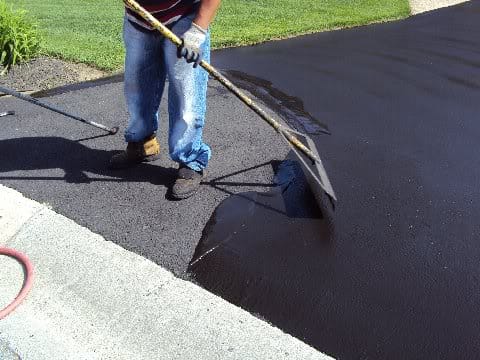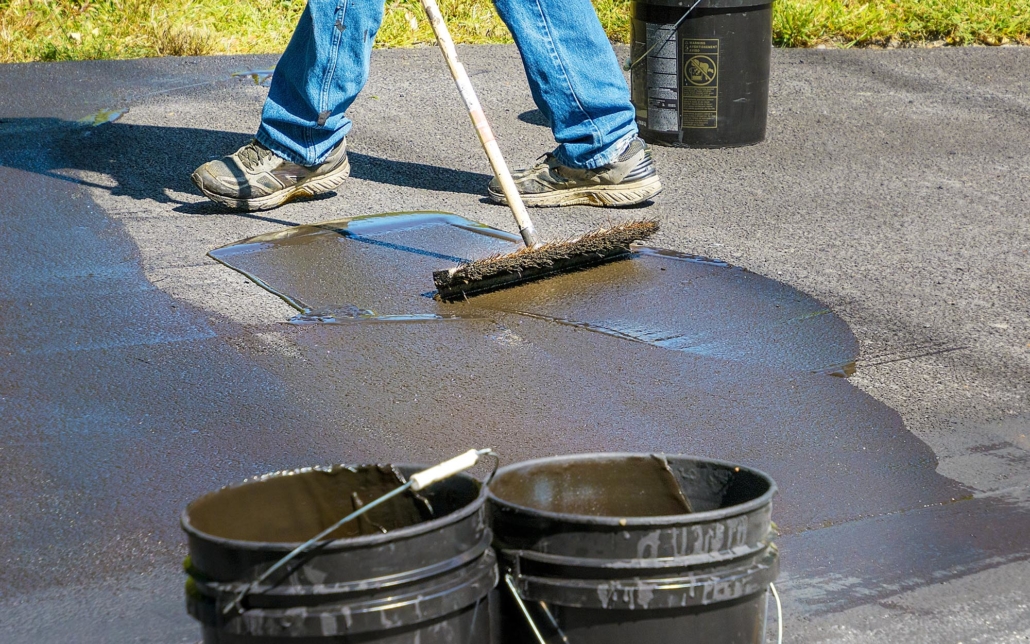Hot Mix Asphalt: A Sustainable Remedy for Pavement
Warm Mix Asphalt (HMA) has actually emerged as a leading lasting choice for sidewalk options, using a myriad of environmental advantages and cutting-edge technologies. As the need for eco-friendly construction methods grows, exploring the subtleties of HMA's sustainability can give beneficial understandings right into the future of pavement options.
Ecological Benefits of Hot Mix Asphalt

Additionally, Hot Mix Asphalt assists to minimize city warm island results. Its dark shade takes in sunlight, decreasing the quantity of warmth reflected back into the environment contrasted to lighter-colored sidewalks. This can lower ambient temperature levels in city locations, reducing the demand for a/c and eventually decreasing energy intake.
On top of that, Hot Mix Asphalt adds to boosted stormwater monitoring. Its porous nature permits water to recharge and infiltrate the sidewalk groundwater supplies, decreasing drainage and the risk of flooding. These environmental benefits make Warm Mix Asphalt a lasting selection for paving freeways and roadways.
Power Performance in HMA Manufacturing
Is power effectiveness a crucial factor in the manufacturing of Hot Mix Asphalt (HMA)? Power plays a substantial duty in the manufacturing of HMA, affecting both expense and environmental sustainability. One essential element of energy efficiency in HMA manufacturing is the use of warm mix asphalt (WMA) innovations.
Moreover, developments in plant modern technologies have actually led to even more energy-efficient HMA production procedures. By maximizing power use in HMA manufacturing, the market can lower its carbon impact while maintaining high-grade pavement materials.
Recyclability of Warm Mix Asphalt
The recyclability of Warm Mix Asphalt (HMA) is a critical facet of its sustainability and long-lasting ecological impact. HMA is among one of the most recycled products in the USA, with over 100 million tons of redeemed asphalt sidewalk (RAP) being recycled yearly in brand-new sidewalk building. Recycling HMA uses a number of environmental benefits, such as minimizing the need for virgin products, decreasing power usage during manufacturing, and lowering the amount of waste sent to landfills.
The procedure of recycling HMA includes milling the existing pavement, squashing it right into smaller pieces, and blending it with new aggregate and asphalt binder to create a recycled mix. This recycled mix can typically carry out in addition to or perhaps much better than traditional HMA, while calling for less resources and generating lower greenhouse gas exhausts. By integrating RAP right into brand-new pavement projects, road firms can conserve all-natural resources, reduce costs, and reduce the ecological impact of roadway construction and upkeep tasks. On the whole, the recyclability of HMA plays a significant function in promoting sustainable methods within the pavement market.

Long-Term Performance of HMA
Asphalt pavements show durability and durability over a prolonged duration, reflecting the long-lasting performance of Hot Mix Asphalt (HMA) The long life this link of HMA can be associated to its capability to endure heavy website traffic loads, extreme weather condition problems, and the effects of aging. Research studies have revealed that properly designed and appropriately created HMA sidewalks can last for twenty years or even more with routine upkeep. The trick to maximizing the long-lasting performance of HMA hinges on utilizing high-grade products, following best methods in construction, and applying reliable upkeep techniques. Proper drainage, regular evaluations, and timely fixings are vital for protecting the architectural stability of HMA pavements gradually. Additionally, improvements in HMA technology, such as using polymer-modified binders and cozy mix asphalt, have further enhanced the resilience and long life of HMA pavements. By prioritizing top quality construction and maintenance methods, HMA remains to confirm itself as a lasting and cost-effective remedy for durable sidewalk infrastructure.

HMA: Durability and Sustainability
Showing both resilience and sustainability, Hot Mix Asphalt (HMA) has come to be a keystone in the building and construction of lasting sidewalk infrastructures - hot mix asphalt. HMA's durability originates from its capacity to stand up to heavy lots, severe climate condition, and high web traffic quantities, making it a reputable option for highways, highways, and flight terminal paths. The make-up of HMA, which normally includes accumulations, binder, and filler, plays a crucial function in boosting its long life and resistance to tear and use
Additionally, HMA's sustainability exists in its recyclability and energy-efficient manufacturing procedure. The ability to recycle redeemed asphalt click resources sidewalk (RAP) in brand-new HMA blends reduces the need for virgin materials and decreases the ecological influence of sidewalk building and upkeep. In addition, the energy effectiveness of creating HMA lies in its reduced mixing temperatures contrasted to various other sidewalk products, causing decreased energy intake and greenhouse gas emissions.
Final Thought
Finally, warm mix asphalt (HMA) supplies a sustainable service for sidewalk with its eco-friendly characteristics. HMA's recyclability, power effectiveness in manufacturing, and long-lasting sturdiness make it an environmentally friendly choice for roadway building and construction. By conserving natural deposits, reducing waste, and reducing greenhouse gas exhausts, HMA plays a crucial function in promoting sustainability in framework advancement. Its capacity to reduce city heat island effects better highlights its significance in developing resilient and eco mindful sidewalk systems.
HMA is one of the most recycled materials description in the United States, with over 100 million bunches of reclaimed asphalt sidewalk (RAP) being reused yearly in brand-new sidewalk building.The procedure of reusing HMA includes grating the existing sidewalk, crushing it right into smaller pieces, and blending it with new aggregate and asphalt binder to develop a recycled mix.Asphalt pavements demonstrate toughness and strength over an extensive period, mirroring the long-term performance of Warm Mix Asphalt (HMA) Additionally, developments in HMA innovation, such as the usage of polymer-modified binders and cozy mix asphalt, have actually additionally improved the toughness and longevity of HMA sidewalks. The ability to reuse reclaimed asphalt sidewalk (RAP) in new HMA mixtures decreases the demand for virgin products and lessens the environmental effect of sidewalk construction and upkeep.